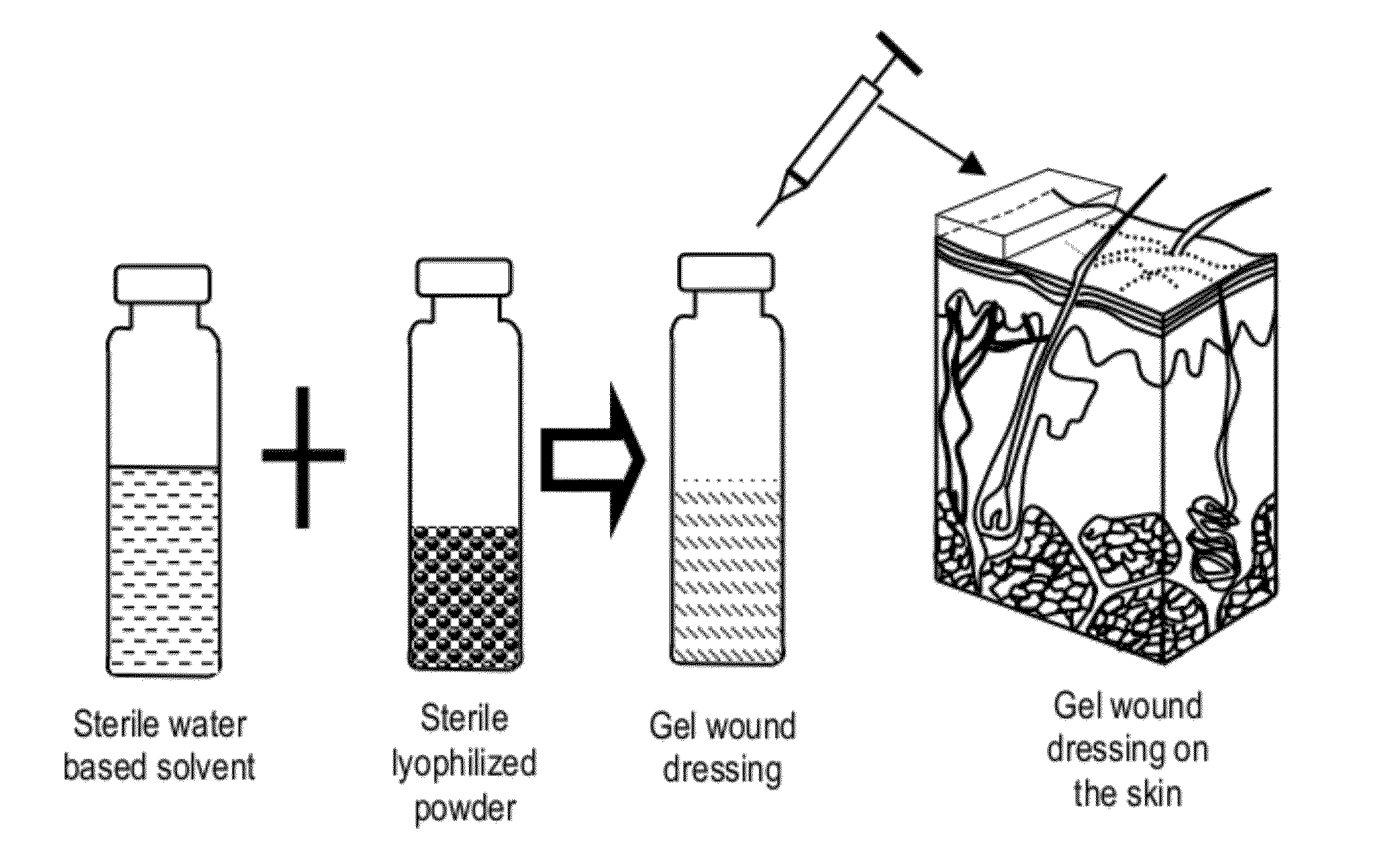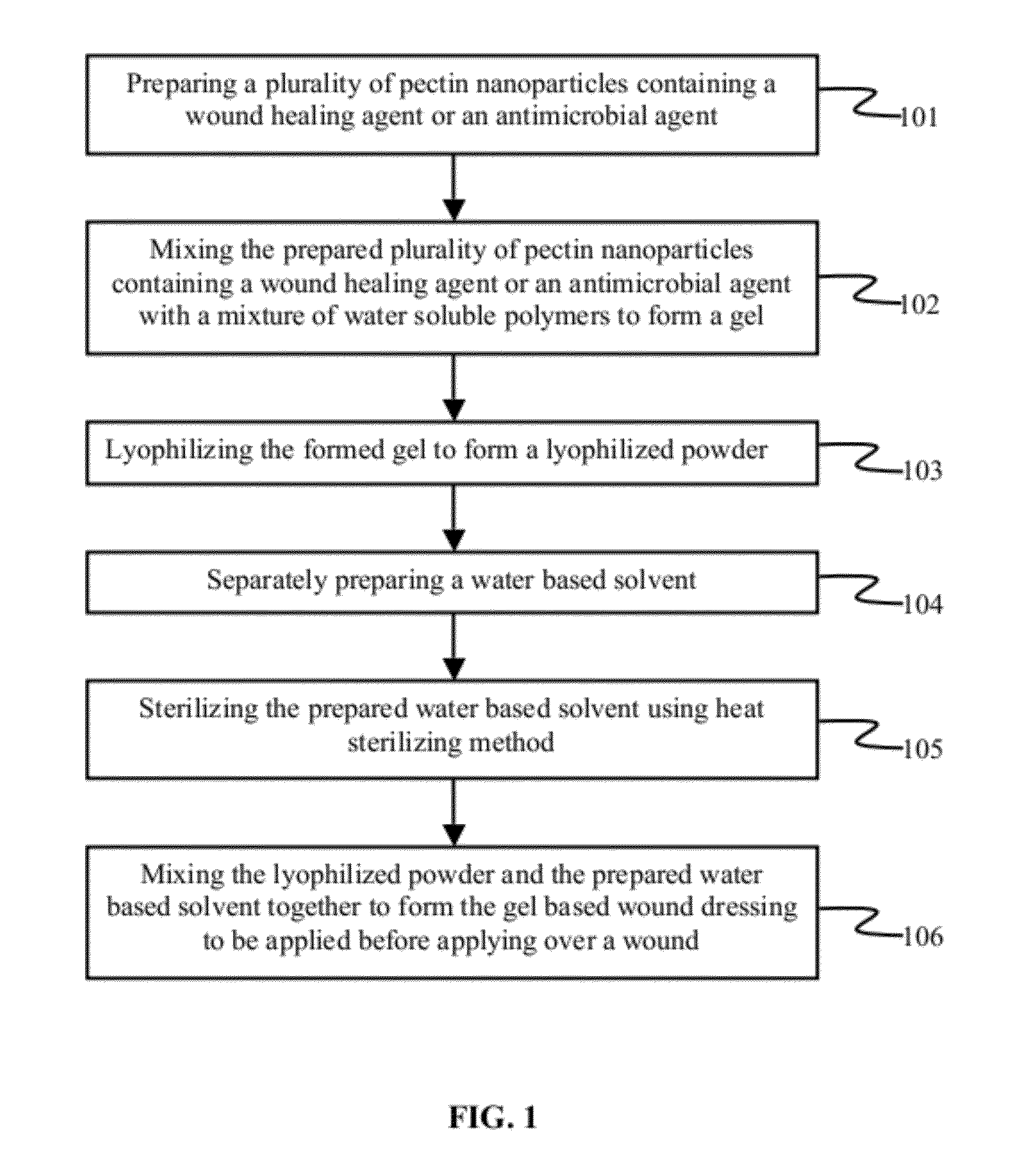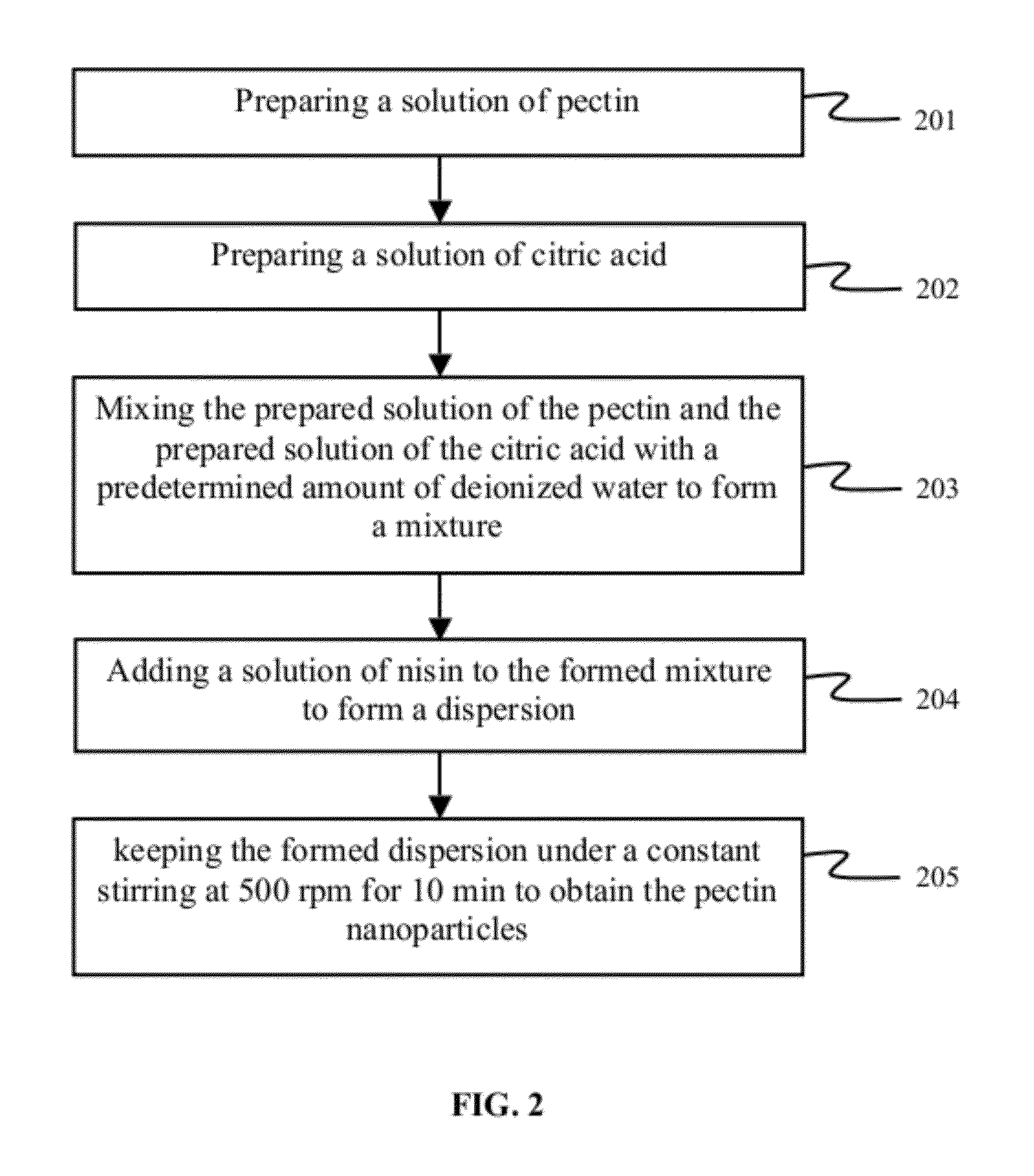Gel based wound dressing and a method of synthesizing the same
a gel-based wound dressing and gel-based technology, applied in the field of wound dressings, can solve the problems of not one specific dressing, traditional wound dressings that do not provide optimum moisture content for wound healing, gel-based wound dressings that require moisture for an effective function,
- Summary
- Abstract
- Description
- Claims
- Application Information
AI Technical Summary
Problems solved by technology
Method used
Image
Examples
example 1
[0056]Preparation of pectin, raisin and citric acid solutions: The gel based wound dressing was made from pectin and pectin nanoparticles that are placed on the surface of pectin strands. The Pectin solution with different concentrations, such as pectin solutions with concentrations of 1.25-5 mg / ml were freshly prepared in deionized water and stirred for complete hydration and then filtered using syringe a 0.45 micron filter (Millipore, USA). Nisin solutions with different concentrations of 0.1-40 mg / ml were prepared in deionized water and filtered using syringe 0.45 micron filter (Millipore, USA). The citric acid solutions with different concentrations of i.e. 0.2-1 mg / ml were freshly prepared in deionized water.
example 2
[0057]Preparation of pectin-nisin nanoparticles: The pH of Pectin solution was adjusted to be within 3.7 to 4.8. In one sample, firstly the pH of Pectin solution was adjusted to be equal 3.7. Then, 1 ml of pectin solution (1.25 mg / ml), 0.5 ml of citric acid solution (0.2 mg / ml) and 0.5 ml deionized water were mixed in a container and were placed on a stirrer under 1400 rpm of constant stirring for 3 min. Pectin-nisin nanoparticles were prepared by addition of 1 ml of nisin solution (0.2 mg / ml) to the pectin and citric acid solution at rate of 0.25 ml / min under constant stirring (1400 rpm). After addition of nisin solution, the dispersion of pectin-nisin nanoparticles was kept on stirrer under constant stirring (500 rpm) for 10 min.
[0058]The size and zeta potential of pectin-nisin nanoparticles were analyzed using a Zetasizer nano ZS (Malvern instrument Ltd, United Kingdom). FIG. 5 shows a Dynamic Light Scattering (DLS) curve indicating distribution of the size of nisin-pectin nanopa...
example 3
[0060]The effect of pH of pectin solution on the particle size and zeta potential of pectin-nisin nanoparticles: The effect of pH of pectin solution was evaluated on the particle size and zeta potential of pectin-nisin nanoparticles. A series of pectin solution (2.5 mg / ml) with different pH values ranging from 3.7 to 5.3 were prepared by using 0.1 N NaOH solution. Different pectin-nisin nanoparticles were prepared by mixing 1 ml of nisin solution (2.5 mg / ml), 0.5 ml of citric acid solution (0.2 mg / ml), 0.5 ml of deionized water and 1 ml of pectin solution (2.5 mg / ml) with different pH values in the range of 3.7-5.3. FIG. 7 shows a graphical representation showing the effect of pH of pectin solution on the size and zeta potential of pectin-nisin nanoparticles, according to the embodiments herein. As shown in FIG. 7, the increase in the pH of pectin solution above 4.8 results in an increase in the size of pectin-nisin nanoparticles significantly. Moreover, an increase of the pH of pec...
PUM
| Property | Measurement | Unit |
|---|---|---|
| mean diameter | aaaaa | aaaaa |
| mean diameter | aaaaa | aaaaa |
| mean diameter | aaaaa | aaaaa |
Abstract
Description
Claims
Application Information
 Login to view more
Login to view more - R&D Engineer
- R&D Manager
- IP Professional
- Industry Leading Data Capabilities
- Powerful AI technology
- Patent DNA Extraction
Browse by: Latest US Patents, China's latest patents, Technical Efficacy Thesaurus, Application Domain, Technology Topic.
© 2024 PatSnap. All rights reserved.Legal|Privacy policy|Modern Slavery Act Transparency Statement|Sitemap



